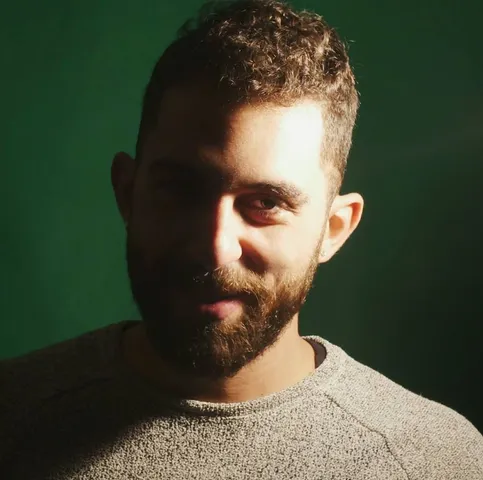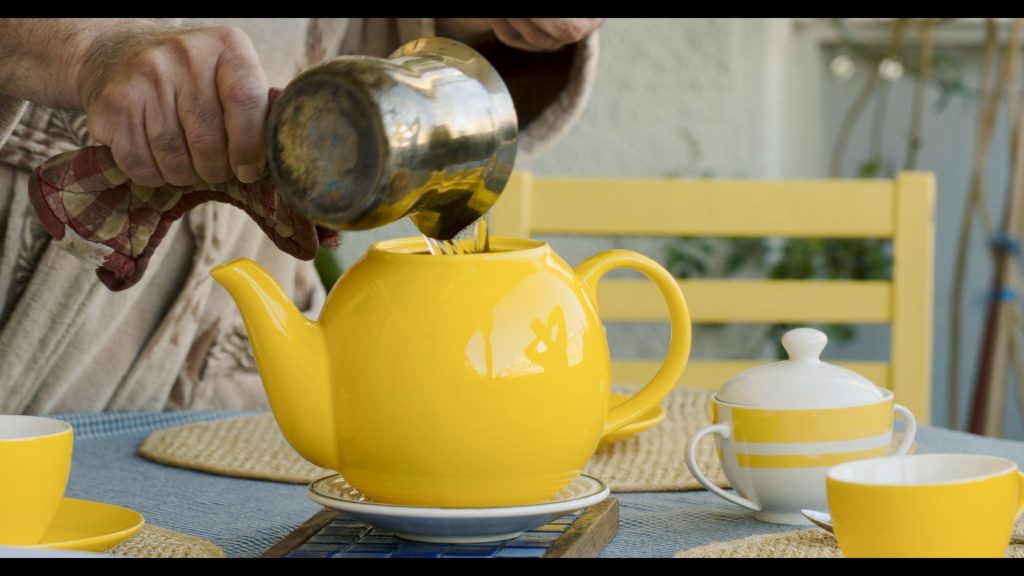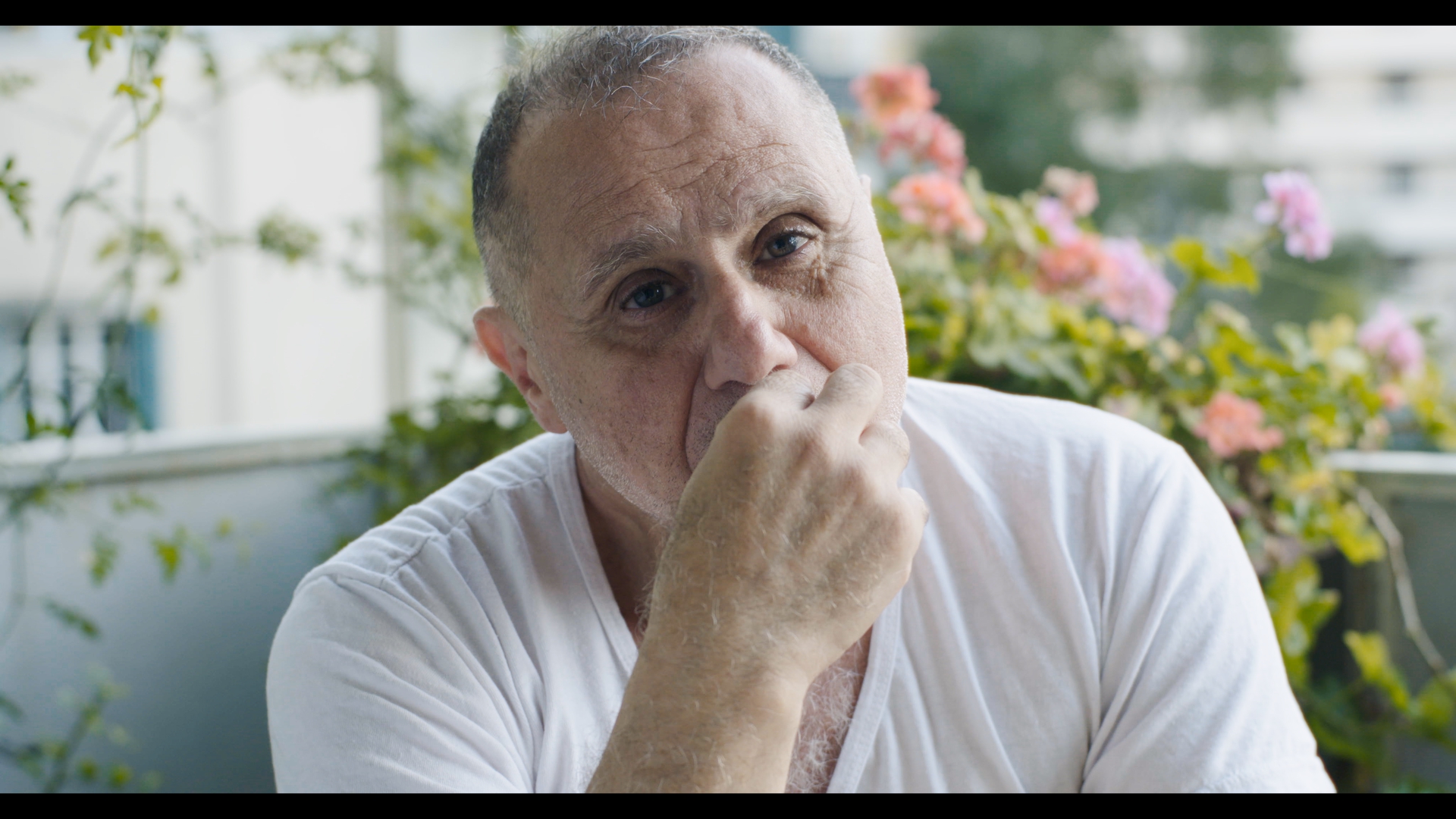English below
La Selección Oficial de Cuórum 2023 tiene entre sus títulos una original y novedosa propuesta de Líbano, “Té con Adonis” de Selim Mourad (Agate Mousse, 2020). El cineasta compartió para cuorum.com.mx sobre lo que lo llevó a hacer este mediometraje que acerca con ternura y delicadeza a dos generaciones queer preguntando por su historia y construyendo puentes a través de las artes visuales con una dosis suficiente de humor negro.
La vida es tan rica y compleja que no podemos pretender encuadrarla solo dentro de las estéticas “realistas”.
Selim Mourad

¿Qué fue lo que te llevó a hacer “Té con Adonis”?
En primer lugar mi amistad de tanto años con Abraham Srour, que interpreta a Adonis, y el deseo mutuo de colaborar juntos en un proyecto artístico. También por la urgencia que tengo por contribuir al proceso de transmitir memoria en mi país. Cada generación pasa por la ilusión de sentir que son las primeras personas queer en aparecer. Cuando era adolescente pensaba que esta solo en el mundo pero luego conocí a personas de mi edad o un poco más grandes. Luego comencé a tener más amigos maduros y me preguntaba por qué las enseñanzas de cierta generación no son retomadas por las que les siguen.
En un país como Líbano, donde por la Guerra Civil y temas políticos, incluso la memoria general no siempre se transmite –nuestros libros oficiales de Historia dejaron de hacerse en 1946–, transmitir la historia queer se vuelve todavía más difícil. En ese sentido, sentí la responsabilidad por hacer algo tan modesto como resulta ser.
La película también surgió gracias a un taller en línea que tomé en 2020 con Mohammad Shawky Hassan, Queer archives and archival queers. A partir de eso apliqué a un fondo para cortometrajes. Fue un taller muy inspirador.
¿Cuáles son tus métodos creativos?
Me gustan las formas híbridas, jugar en la delgada línea que existe entre la “ficción” y el “documental”. La vida es tan rica y compleja que no podemos pretender encuadrarla solo dentro de las estéticas “realistas”. Quería hacer una película simple finalmente: una conversación entre dos hombres. Pero eso no significaría que esta casa (como las tragedias de los viejos) con dos personas dentro (a veces tres) no pueda sostener las fantasías, sueños, miedos de estas personas así como de las generaciones que representan. Si Ameer me representa de alguna manera y Adonis representa a Abraham, el tercer personaje, Hisham, es una inserción puramente ficcional dentro de la película; representado por un amigo mío, su presencia permite que los temas y sentimientos puedan emerger entre Adonis y yo.
También me gusta la presencia de un cuerpo desnudo a cuadro. Cuando se logra, le da una semejanza como de pintura y es una herramienta desafiante en el juego. Tanto Adonis como Ameer se quitan la ropa, pero ¿cuándo? y ¿cómo? Parte de esta reflexión, fue jugar con la idea de la muerte. Después quería crear la impresión de un momento largo en el tiempo que pasan estos dos hombres aunque los días presentes sigan pasando. Entonces jugué con el hecho que dentro de la misma secuencia, algunas veces traemos puestas ropas distintas de un plano a otro.
¿Qué te gustaría que el público se lleve de “Té con Adonis”?
Me gustaría que recuerden el amor. Es algo hermoso el poder estar juntos con las mismas o diferentes generaciones; de aprender uno del otro, compartir nuestras experiencias comer y cenar juntos. Amigos y seres queridos y seres humanos en general, pueden ser nuestro oxígeno (como dice Adonis) “cuando el oxígeno escasea”. Nos ayudan a reconectar con nuestro propio oxígeno. Transmitir la historia de generación en generación es importante. No tener miedo a preguntar cualquier duda que tengamos mientras lo hagamos desde una forma amorosa.
También me gustaría que recordaran los colores de la casa tan hermosa de Adonis. El amarillo por todas partes, desde la tetera a mi chamarra, el rojo de la pared frente a la que cada personaje se presenta a sí mismo; la canción y el baile del final…finalmente siento que también es un poema de amor a Beirut.

¿Cuáles dirías que han sido tus fuentes de inspiración para hacer cine “queer”?
Como dije antes, principalmente el taller online Queer archives and archival queers que cursé. También hice un largometraje documental en 2016 titulado This Little Father Obsession en el que retrato a mi padre entre los personajes y temas que lo rodean. Siempre he sentido que “Té con Adonis” es una pieza fílmica que lo acompaña. Un amigo vio en la película destellos de imaginarios de discípulos de la Antigua Grecia, ¿por qué no?
The Official Selection of Cuórum 2023 has within an original and innovative proposal from Lebanon, “Tea with Adonis” by Selim Mourad (Agate Mousse, 2020). The filmmaker shared for cuorum.com.mx what made him do this midlength film that approaches with tenderness and delicacy two queer generations wandering for their history and building bridges through visual arts and a necessary dosis of black humor.
What was the starting point of Tea with Adonis?
My friendship with Abraham Srour (Adonis) over many years and the mutual desire to collaborate on an artistic project together. The urgency within me to contribute to the process of transmitting memory. Every generation passes through the illusion that they are the first queers to emerge. When I was a teenager, I started thinking I was alone in the universe, but then i met people my age or a bit older. Then I started having much older friends and I wondered why the learnings of one generation don’t come in handy to the one after. In a country where, due to civil war and political issues, even general memory is not always transmitted (our official school History books stop in 1946…), transmitting queer history becomes even more difficult. I felt a responsibility to do something in that regard, as modest as it is.
It was through an online workshop in 2020 with Mohammad Shawky Hassan “Queer archives and archival queers” that I actually decided to apply for a short fund and do this short film. It was a very inspiring workshop.
Can you tell us about your creative methods?
I like hybrid forms. I like playing on the thin line between “fiction” and “documentary”. Life is so rich and complex, one cannot pretend to frame it within “realistic” aesthetics. So yes I wanted to make a simple film for once: a conversation between two men. But this did not mean that this one house (like tragedies of old people) with two people inside it (sometimes three) could not carry the fantasies, dreams, fears of those people and the generations they represent.
If Ameer (the character) represents me somehow and Adonis represents Abraham somehow, the third character “Hisham” is a pure fictional insertion inside the film. Portrayed by a friend of mine, his presence allowed topics and feelings to emerge between Adonis and me.
I like the presence of the nude body in a frame. If well used, it gives right away a painting-like quality. It is also a challenging tool in the game. Both Adonis and Ameer take off their clothes, but when? and how Playing with the idea of death was part of this reflection.
Then I wanted to create the impression of one long moment in time between those two men, even though actual days may be passing. So I played on the fact that inside the same scene, we are sometimes wearing different clothes from one shot to the other.
What would you like people to take away from Tea with Adonis?
I would like people to remember love. It is so beautiful to come together, within the same generations or between different generations, to learn from each other, share our experiences, have dinner and food together. Friends and loved ones, and human beings in general, can be our “oxygen’ (like Adonis says) when oxygen is scarce. They can help us reconnect to our own oxygen.
Transmitting history is important from generation to generation. Not being afraid to ask any question in mind as long as it’s in a loving way. I would also like them to remember the colors of the beautiful house of Adonis. The yellow everywhere, from the tea pot to my jacket, the red of the wall in front of which each character presented himself, the song and dance in the end. Finally, I feel it is also a love poem to Beirut.
What were/are your film queer source inspirations?
As I mentioned before, mainly the “queer archives and archival queers” course online. Also I did a feature documentary in 2016 “This Little Father Obsession” in which I portray my father amongst other characters and topics. So I always felt like this shorter documentary “Tea with Adonis” is an accompanying piece to the other one. A friend of mine saw in the film resurgences of master/disciple Ancient Greece imagery in the film, why not?

